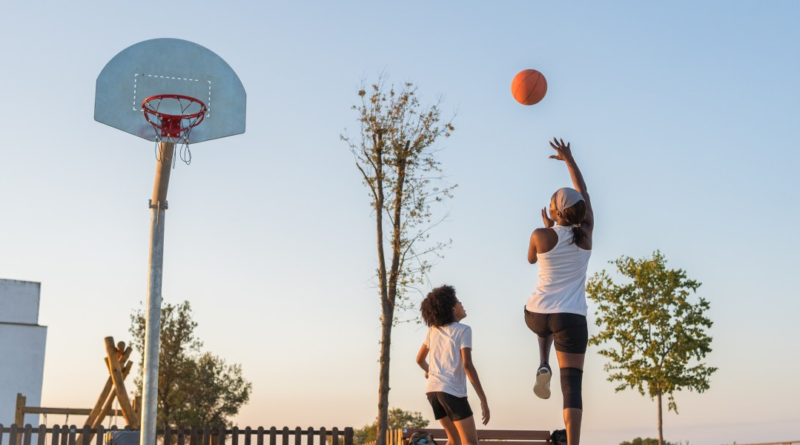5 Healthy ways to talk about fitness around your kids: Create ‘a sense of empowerment’
When it comes to modeling ideas around healthy fitness for her two-year-old son, running coach and former pro distance runner Kaitlin Gregg Goodman is careful about how she frames her own passion for the sport: that it’s something she does for pleasure.
“I want him to really think––and know––it’s something I do for fun, for health, something we do for ourselves. Not something I have to do,” she tells Fortune, but something she gets to do.
She, like so many other adults, understands that relationships with exercise can be complex, and often negative. That’s why Gregg Goodman is starting early with positivity around the topic with her son, and why experts advise other parents to do the same.
“When it comes to body image and exercise, our social and family network can be either a protective factor or a risk factor,” says Deborah Glasofer, associate professor of clinical medical psychology in psychiatry at the Columbia Department of Psychiatry.
This can start at a young age, she says.
“Children are sponges,” Glasofer tells Fortune. “If you hear your child use disparaging language about their appearance or express unhealthy ideas about exercise, that should ring an alarm in your mind to be mindful of your potential role in that.”
Below, experts weigh in on how your words and actions around fitness can impact impressionable kids in your life, at any age—and how to promote a positive relationship with exercise.
Focus on what your body can do
Our bodies do a lot for us every day, but that can get lost when we’re stressed about appearance and not feeling our greatest.
Licensed family therapist Mary Beth Somich says it’s important for parents to use language that encourages their children—and themselves—–to focus on what their body can do, versus how it looks.
“Parents can help their children develop a healthy appreciation for their bodies by discussing the strengths and abilities their child possesses,” she tells Fortune.
Show your kids that being active can be fun
Physical activity doesn’t have to be grueling and challenging all the time. Even light exercise is beneficial for your mental and physical health.
And parents can do a variety of activities with their kids to bond and stay moving—many of which might not even feel like exercise.
“Outdoor adventures like nature walks or time at the park, sports, dance parties, yoga, stretching, gardening. The options are endless,” Somich says.
Glasofer agrees, and says “fun” is in the eye of the beholder, meaning it’s worth it to try different activities together to see what works what you both enjoy best.
“Leaning into the fun can make it less of a chore,” she says, which is what stops many people from wanting to exercise in the first place.
Avoid framing exercise as an obligation
Exercise is great for health and longevity reasons, but framing it as an obligation can lead to a negative relationship with it.
“It is helpful to reframe the language used around exercise by saying, ‘I choose to work out today’ rather than ‘I have to work out today,’” Somich says. “This creates a sense of empowerment.”
Giving children the choice to do an activity also gives them control, which is a key part of developmentgrowing up, according to PennState Extension.
Remember food isn’t ‘earned’
Fitness and nutrition are intertwined—and saying things like you earned the dessert you ordered because you worked out can make your child believe they don’t deserve to eat the food they enjoy without working for it, too, says Glasofer.
“Unfortunately, eating and exercise are often paired, and there isn’t any great reason for this,” she says. “No matter your eating habits, exercise has benefits psychologically and physically.”
Somich also stresses the importance of not labeling foods as “good” or “bad” around children—or even for yourself. Instead, acknowledge that healthy eating includes a variety of foods in moderation.
Gregg Goodman says she pays close attention to how she words ideas related to food and exercise around her son.
“I make sure I’m not using language like, ‘This food is a reward for running,’” she says. She instead says her food is refueling her body after a hard effort.
Body neutrality can be just as beneficial as body positivity
It’s not always easy to like what we see in the mirror. But Somich says you don’t have to praise your appearance to make a positive impact on your kids.
“Parents can use positive or neutral language, avoiding negative or shameful body-focused discussions,” she says.
Modeling positive outlooks and behaviors doesn’t have to include positive talk we don’t agree with, Somich says. It’s more about making sure the negative talk isn’t present.
It’s not just what you say
Finally, remember that children pick up on your attitudes more than you may think, suggests Glasofer.
“Sometimes actions are worth a thousand words,” she says.
And most actions don’t go unnoticed by even the youngest members of a family—including things like scrolling on social media, looking at different workout routines, checking your fitness tracker incessantly, or choosing to do a second workout instead of a family activity.
“Body image concerns are easily projected onto children unconsciously,” says Somich, “which is why it is so important to self-reflect on the language and behaviors that you are modeling or the messaging you are promoting to your children.”




